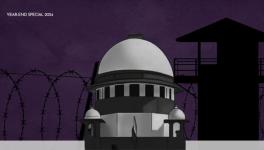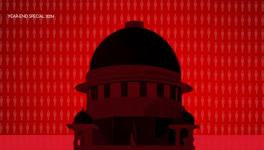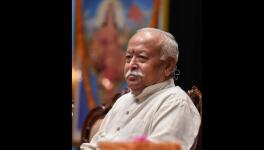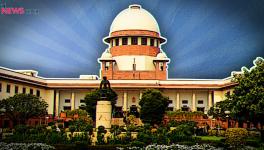Chief Justice Chandrachud’s Ethical Exceptionalism
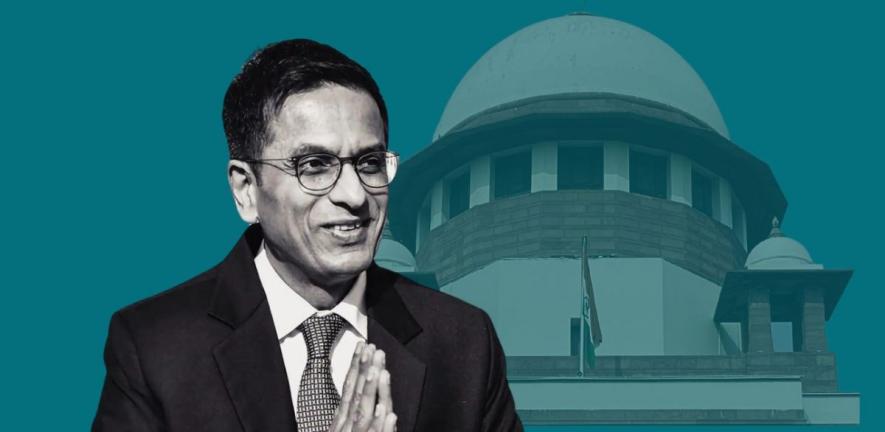
The 50th Chief Justice of India (CJI), Justice Dr D.Y. Chandrachud, will retire on November 10. Before entering office two years ago, the CJI took a solemn constitutional oath to bear true faith and allegiance to the Constitution of India, to perform the duties of the office of the CJI without fear or favour, and to uphold the Constitution of India.
Some of the disturbing ethical lapses that the CJI’s two-year tenure has brought to the fore reveal that he has not been fully conscious and cognisant of his oath. Justice Chandrachud is deeply, and actively, religious— from what he has unfailingly made us all realise over the past two years. There is nothing wrong with that per se. Judges, like most human beings, have deep-seated religious convictions and are constitutionally entitled to practice their religion and faith.
In a plural and secular constitutional democracy, it is inappropriate and unethical for the CJI to publicise his religion.
However, in a plural and secular constitutional democracy, it is inappropriate and unethical for the CJI to publicise his religion. To proudly wear it on his sleeves in his public appearances. The CJI’s personal religious convictions should not have come in the way, or seem to have come in the way, of objective judicial decision-making, which must inevitably be influenced by legal doctrines and constitutionalism.
It is in this context that the CJI’s visit to Hindu temples, including the temples in Somnath and Dwarka in Prime Minister Narendra Modi’s home state of Gujarat, in saffron-coloured attire and in full public glare raises serious ethical questions.
The CJI paid visits to these Hindu temples a week before the grand inauguration of the Ayodhya temple— which is widely perceived as a symbol of Hindu majoritarianism. Obviously, the CJI’s conduct did not go unnoticed and criticism came flowing from all corners.
One would have thought that a person of intellect holding such a high, important constitutional office would course-correct after media backlash. Instead came another ethical lapse.
Only months before retirement, the CJI invited Prime Minister Modi to visit his residence to attend a private religious function. And publicised the event. When questions were raised, he did what he does best. Gave a media byte wearing his usual self-righteous hat. And trivialised the issue. The heads of the executive and judiciary are constitutionally mature enough to not discuss judicial cases in private meetings, he said.
I am sorry but the Indian constitutional democracy should be based not on trust, but on accountability. Readers will remember that a public interest petition seeking a cooling-off period for accepting post-retirement jobs by judges was dismissed by the Supreme Court with an oral remark that the wisdom of judges must be trusted.
Justice Sanjay Kishan Kaul, who was part of the Bench that dismissed the petition, accepted the post of a full-time director in a private company months after his retirement.
The Supreme Court regularly hears matters that question the acts or omissions of the political executive in one form or another. Many such matters have come, and were likely to come, for adjudication before the Supreme Court, or before the CJI himself.
Indian constitutional democracy should be based not on trust, but on accountability.
Further, as master of the roster, the CJI enjoys unfettered powers to allocate such matters to different Benches. Any closed-door, private meeting between the head of the political executive and the head of the judiciary is likely to be perceived as compromising the independence, fairness, impartiality and credibility of the institution of the Supreme Court, as well as the office of the CJI.
Then came yet another ethical lapse. In one of his recent speeches, the CJI publicly revealed that he had turned to God for a solution to the Ayodhya land dispute between Hindus and Muslims.
In any judicial adjudication, outcomes are as important as processes. I have my own reservations against the Ayodhya decision and I do not want to comment on the merits of the case here.
However, when a judge who decided a dispute later on publicly reveals that they had turned to God to find a solution to the dispute, serious ethical questions arise with respect to the process that ultimately led to the judicial outcome.
The CJI’s conduct creates an appearance of judicial bias and impropriety in the minds of reasonable members of the public. Primarily, there are two reasons for this.
Firstly, by constantly wearing the Hindu religion on his sleeves, the CJI is facilitating— knowingly or unknowingly— further oppression of minorities at a time when the Hindu majoritarian culture has subtly taken over the constitutional culture in major parts of the country.
Secondly, invoking religious convictions in legal or constitutional adjudication runs contrary to the Indian democratic values of pluralism and secularism. Add to that the fact that all five judges— after they delivered the anonymous verdict— went to a luxury hotel in Delhi to ‘celebrate’ the verdict. Three out of the five judges were offered— and accepted— plum posts soon after retirement.
Because judges only speak through their judgments, what is equally problematic is that the CJI chose to publicly discuss the Ayodhya judgment, which was decided by a Bench that he was part of.
While we speak about the importance of the doctrine of separation of powers in a constitutional democracy, we often refer to what is known as external judicial independence, i.e., independence from the political executive. However, we tend to forget that judicial independence cannot be achieved unless there is also internal independence, i.e., to adhere to the highest ethical standards of judicial conduct and behaviour at all times.
Invoking religious convictions in legal or constitutional adjudication runs contrary to the Indian democratic values of pluralism and secularism.
Let us take a different example. In September last year, the CJI presided over the fourth edition of the Ram Jethmalani Memorial Lecture series that sought to deliberate on whether the basic structure doctrine has served the nation well.
Over the last 50 years, the doctrine has been used by the Indian Supreme Court to test not only constitutional amendments but also ordinary statutory legislation and executive action. Essentially, the doctrine comes in the way of any action or omission by the wings of the State that tends to ‘damage’ or ‘destroy’ the basic features of the Constitution.
No wonder, any government with a brute majority in the Parliament will not want unelected judges to hold unbridled powers of judicial review to nullify legislative or executive action.
The theme for discussion was framed (knowingly or unknowingly) in such a way that it could have drawn the Indian Supreme Court into a politicised and emotionally charged public arena.
At the event, the CJI shared the dais with the incumbent Union law minister, a member of Parliament from the ruling party, the government’s senior-most law officer, and a vocal supporter of the Hindu-leaning Rashtriya Swayamsevak Sangh (RSS), the editor-in-chief of a news channel owned by a senior member of the ruling party, among others.
The CJI acknowledged the controversial nature of the topic and refrained from commenting on the issue. The larger question, however, is if the CJI, as the head of the judiciary, should have participated in public deliberations around issues that have political overtones, and tend to compromise the Supreme Court’s reputation for impartiality.
What is concerning is that the CJI was extended an invitation, perhaps, to legitimise a narrative against the basic structure doctrine. And the CJI, by accepting the invitation, lent the prestige of his judicial office to legitimise politically-motivated views and narratives around a controversial judicial precedent.
What the CJI also overlooked (consciously or otherwise) is that the basic structure doctrine had been discussed in the Supreme Court only two weeks ago during the hearings relating to a challenge to Article 370.
The CJI spoke highly of Ayurveda which, according to health experts, can neither diagnose nor cure any medical condition; thus seeping pseudo-science into the judiciary.
The debate clearly had a political goal, which was to alter people’s pre-existing understanding of the Constitution and the Supreme Court. Constitutional scholars have often used the phrase ‘constitutional hardball’ in this context where political actors actively seek to alter pre-existing understanding of the Constitution. Once the public debate gets legitimacy, there are sustained efforts to achieve a political goal: which is to bring about radical constitutional change.
Those who hold offices of the State are under a constitutional duty to preserve the independence of the judiciary— an integral feature of the Constitution. Trying to interfere with judicial precedents does not preserve, but rather stifles judicial independence. These are just some of the examples. In one instance, the CJI used his judicial office to lend prestige to Ayurveda, Yoga and Naturopathy, Unani, Siddha and Homeopathy (AYUSH) drugs.
In another instance, he spoke highly of Ayurveda which, according to health experts, can neither diagnose nor cure any medical condition; thus seeping pseudo-science into the judiciary.
Just imagine similar ethical lapses by a trial court judge or even a High Court judge. Actually, we do not have to imagine. Last year, the CJI wrote a public letter rebuking a sitting Allahabad High Court judge for seeking an explanation from the railways about the delay of a train.
More recently, the CJI formed a special Bench that took suo moto notice of inappropriate remarks passed by the Karnataka High Court in open court. High court judges are in no way subordinate to the Supreme Court and a high court judge cannot be removed from office except by way of impeachment.
There exists an in-house disciplinary procedure to consider complaints against judges, but proceedings are supposed to be private and confidential.
Clearly, the CJI would disregard disciplinary restrictions and boundaries to check on other judges. But the CJI— who sits at the top of the judicial hierarchy— cannot be checked.
The Indian Constitution secures judicial independence to a large extent. But what about judicial accountability? The process to remove a judge for judicial misconduct is cumbersome and there is a high bar for initiating and concluding impeachment proceedings. And given that no judge has ever been removed for judicial misconduct, it is hard to imagine any judge getting removed from office for extra-judicial ethical improprieties.
A full court meeting of the Supreme Court approved a “restatement of values of judicial life” in 1997. The Bangalore Principles of Judicial Conduct were adopted by the Round Table Meeting of Chief Justices held in 2002 at the Peace Palace, The Hague.
The idea behind the adoption of these standards for judicial conduct and behaviour flows from the need to ensure that justice is not only done but is also manifestly seen to be done.
He also failed to strike a healthy balance between sufficiently representing the judiciary in public debates and preserving judicial independence and impartiality.
Not only do these standards encounter serious shortcomings, but there is also no mechanism to enforce these principles and values when a judge chooses to disregard them.
The Constitution provides for removal only by way of an impeachment. Removing (directly or indirectly) a judge from office in a way other than impeachment would be constitutionally suspect. And any ethics code or standard that does not lead to a judge’s removal lacks bite.
The CJI, as head of the institution, represents the judiciary at all times— both on and off the Bench— and should act in a manner that facilitates constitutional culture and promotes public confidence in the integrity and impartiality of the judiciary. In deciding whether to appear in public, the CJI failed to consider whether doing so would create an appearance of impropriety in the minds of reasonable members of the public.
He also failed to strike a healthy balance between sufficiently representing the judiciary in public debates and preserving judicial independence and impartiality.
Justice Chandrachud’s conduct raises serious questions about the sufficiency of ethical standards for Supreme Court judges, and it is time that an enforceable code of conduct is drawn and religiously implemented to restore the damaged legitimacy of the Supreme Court.
Ashish Goel is a Supreme Court lawyer, specialising in public law and international tax law.
Get the latest reports & analysis with people's perspective on Protests, movements & deep analytical videos, discussions of the current affairs in your Telegram app. Subscribe to NewsClick's Telegram channel & get Real-Time updates on stories, as they get published on our website.











